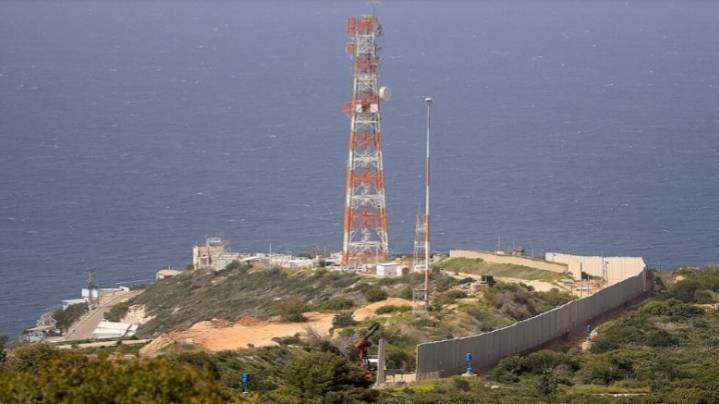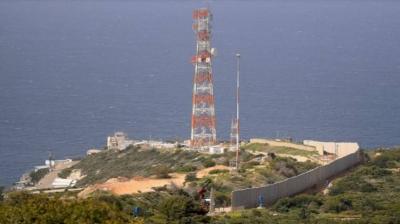It is Block 9, commonly referred to as the "famous maritime block," that has drawn significant attention, especially after reaching an agreement to delineate maritime borders between Lebanon and Israel. This maritime area combines elements of politics, security, and economy, being the most immediate in terms of starting exploration amidst ongoing Lebanese crises, characterized by institutional vacancies and regional tensions. Historically, the oil block was discovered in 2009 by the American company Noble Energy, which found quantities of oil and gas reserves in the eastern Mediterranean sea basin. Years later, Lebanon announced a public tender to international companies to invest in Block 9, leading to dissatisfaction from the Israeli side due to the sensitivity of the three southern maritime blocks along the Israeli territorial waters. Soon after, Lebanon signed a contract in February 2018 with a consortium of international companies to explore oil and gas resources in blocks 4 and 9 in Lebanese territorial waters.
The depth of Block 9 ranges between 1,211 and 1,909 meters below sea level. It remained a point of contention between Lebanon and Israel following the awarding of contracts to the companies, while relevant Lebanese ministerial bodies warned at the time that the disagreement would not prevent Lebanon from benefiting from the potential reserves in the disputed area. The tensions persisted as Israel claimed that part of Block 9 was located in Israeli maritime waters and viewed Lebanon's intention to explore as an extremely provocative step. The clashes continued until a "historic agreement" was reached through American mediation after months of negotiations. The focus remained particularly on Block 9, which includes the Kana field, as a significant area for exploration. The agreement stipulated that Israel would receive compensation from the operating companies as part of Kana field lies outside Lebanese territorial waters. It is noted that the main point upon which the delineation agreement was built centered on Block 9, with the entire Karish field lying on the Israeli side.
Block 9 continues to be a focal point in the upcoming phase, as it is closest to commencing exploration within months. Several influences are associated with this matter: What political impact will the ongoing paralysis in Lebanon have? Why is Block 9 considered promising, without disregarding its political and delineation sensitivities? What stages will follow the discovery of commercially viable gas?
Several questions posed by "An-Nahar" regarding Block 9 were directed to energy governance expert and member of the Advisory Council for the Lebanese Oil and Gas Initiative, Diana Al-Qaisi, who outlines the upcoming phase as follows:
First, there is a constant fear of political obstruction in Lebanon affecting the work of ministries, which would reflect on the commencement of exploration in Block 9. This phase will witness the analysis of data resulting from the environmental survey of the block before issuing reports and subsequently granting licenses from the Lebanese state for exploration, which necessitates active ministries capable of functioning. If Lebanon enters a phase of political chaos, this would impede the exploration work. Additionally, the role of the Ministry of Public Works in monitoring, supporting, and accompanying logistical operations originating from the Port of Beirut cannot be overlooked, nor can the essential role of the Ministry of Energy. Consequently, any political obstruction affects ministerial actions, raising concerns about its negative impact on exploration.
Secondly, according to discussions the Minister of Energy had with the company representing the consortium, drilling in Block 9 is expected to commence in the fourth quarter of the year, specifically towards the end of summer. Lebanon awaits the drilling company's response regarding the results of the tenders to attempt finding a drilling rig among the bids from companies that own maritime drilling rigs. The suitable rig must be found and allocated approximately two months to start the exploration. The prospects for Block 9 and all southern maritime blocks hinge on the results of 2D and 3D surveys, which have indicated the existence of potential reserves, with expectations of identifying a well after commencing the exploratory operations. It is worth noting that the chances of finding commercially viable quantities in an unexplored area are less than 18 percent, but hopes remain.
Thirdly, the drilling process in Block 9 is linked to a license granted in 2018, which remains valid as it was renewed for the companies to provide an additional year for exploration. However, the problem lies in the absence of a presidential election and the formation of a fully empowered government, which is essential for any development plans requiring an operational Council of Ministers. A future decree is necessary to appoint members of the Petroleum Management Authority or to renew for existing members and appoint individuals to vacant positions. Additionally, Lebanon initiated a second licensing round for the remaining eight blocks, as evaluating bids needs to be reviewed by the Petroleum Management Authority and the Minister of Energy in the Council of Ministers.
Fourthly, the chances of discovering commercially viable gas increase if the exploration occurs near fields where discoveries have already been made, with the potential for the reserves to extend. This indicates the prospects for Block 9 but does not rule out the possibilities for other blocks, as the seismic surveys have shown the likelihood of gas across the entire marine area estimated at 22,000 square kilometers. Cautiously, it can be said that attention particularly centers around the three southern maritime fields where discoveries have been made.
Fifthly, following a discovery, several wells will be drilled to determine if the gas quantities are commercial before transitioning to developmental plans, during which the company decides how to extract the gas and the technique used through pipelines or liquefied gas options. It is noteworthy that gas sales occur before extraction, with the seller determining how to formulate the development plan that includes infrastructure development stages. These details are documented and sent to the Petroleum Management Authority for review and feedback to the Minister of Energy, who examines the content and provides recommendations before elevating the plans to the Council of Ministers for approval. Implementation begins after approval of the development plans and the potential construction of pipelines, which takes approximately a year and a half for infrastructure development before entering a production phase that lasts about a year. In the best-case scenario, this process would require no less than five years in a country that does not suffer from crises.




